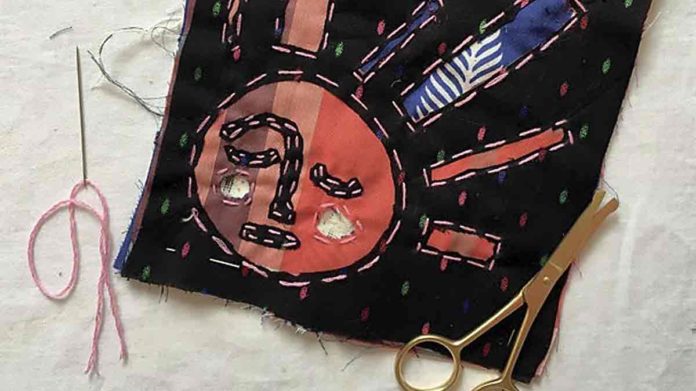Fostering Longevity for Fashion Revolution Week
A decade on, we are #RememberingRanaPlaza.
This week (22nd - 29th April), we remember the 1,138 lives lost. We remember the workers and the families affected by this preventable disaster and stand in solidarity with the organisations working on the ground to hold the fashion industry accountable, and who have supported garment workers in Bangladesh in the last 10 years.
In 2018, Fashion Revolution created a 10-point Manifesto for a global fashion industry that conserves and restores the environment and values people over growth and profit. From supply chain transparency to living wages, textile waste to cultural appropriation, freedom of association to biodiversity, we at Lowie join Fashion Revolution in overcoming fashion’s most pressing social and environmental problems.

In particular, we seek to honour the perfection of imperfections, and view the act of mending as something that can breathe new life into much-loved items whilst reducing what ends up in landfill.
Our ongoing initiative, Free Repairs for Life, features pieces that have been beautifully mended by Jo, our in-house repair specialists. As well as working on repairing your items as part of our free repair service, Jo also finds innovative ways to repurpose damaged items from those returned by customers. Jo uses a variety of techniques to extend the life of the items she’s working on, and in the spirit of waste reduction and creative expression, we’ve shared some time-honoured methods below.
Sashiko
Sashiko is a traditional Japanese sewing technique that originated in the Edo era (1603-1868). The word "sashiko" means "little stabs" or "little pierce" in Japanese, which refers to the small stitches used to create geometric patterns on fabric. 
Sashiko was originally used as a way to reinforce and repair worn-out clothes and textiles, particularly in rural Japan where resources were scarce. Over time, it evolved into an art form that is admired for its beauty and intricacy. Today, Sashiko is still practiced as a form of embroidery and is used to decorate clothing, bags, and household items.
Sashiko is characterized by its use of white cotton thread on indigo fabric, which creates a distinctive contrast that is both striking and elegant. The most common patterns are geometric shapes such as squares, diamonds, and circles, which are often arranged in repeating patterns. The stitches used are typically simple running stitches, which are easy to learn and execute, even for beginners.
Appliqué
Appliqué is a decorative technique in which fabric pieces are cut and sewn onto a larger piece of fabric to create a design or pattern. The fabric pieces can be sewn onto the base fabric by hand or by machine. Appliqué can be used in a variety of projects, including quilts, clothing, home decor, and accessories.
There are different types of appliqué techniques, including raw edge appliqué, turned edge appliqué, and fused appliqué. In raw edge appliqué, the fabric pieces are cut and sewn onto the base fabric without any finishing, which can give a rustic or rough look. In turned edge appliqué, the edges of the fabric pieces are folded under and sewn onto the base fabric, which can give a more polished look. In fused appliqué, the fabric pieces are first fused onto the base fabric using an adhesive, and then stitched in place.
Reverse Appliqué
Reverse appliqué is a technique in sewing and textile arts in which a piece of fabric is layered beneath another piece, and then a portion of the top layer is cut away to reveal the underlying layer. This technique creates a design or pattern on the top layer, with the contrasting colour or texture of the bottom layer showing through the cut-out areas. Reverse appliqué can be done by hand or with a sewing machine, and can be used in a variety of projects including clothing, quilting, and home decor. It is a versatile technique that allows for a range of creative expression and can be adapted to suit different fabrics, designs, and skill levels.

Darning
Darning is a sewing technique that involves repairing a hole or tear in fabric by weaving threads or yarn over the damaged area. It is a traditional method of mending clothing and textiles that dates back centuries.

The process involves first stabilising the area around the hole or tear with small stitches to prevent it from further unraveling. Then, a series of parallel threads, called the warp threads, are woven across the hole in one direction. Afterward, a second set of threads, called the weft threads, are woven perpendicular to the warp threads, creating a woven patch over the damaged area. The result is a nearly invisible repair that blends in with the surrounding fabric.

Darning can be done by hand or with a sewing machine, and it can be used to repair many types of fabrics, including wool, cotton, and denim.
Learn more about our free lifetime repair service, and upcoming repair workshops here.


